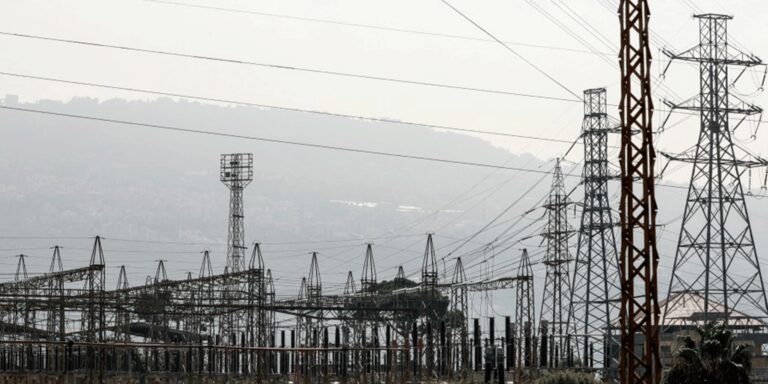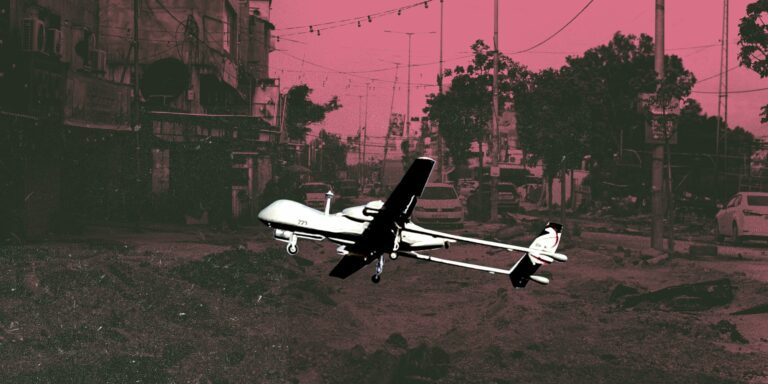It is a recurring scene. In an attempt to fight a local Palestinian product, Israeli bulldozers take revenge on the land, by razing crops and spraying pesticides in the northern Jordan Valley and the Gaza Strip.
Jamil Abu Helmeya (49 years), a strawberry and potato farmer in northern Gaza, told Daraj how his crop, without any warning, was bulldozed by Israeli military vehicles in early January. Six bulldozers stormed in and destroyed seven dunums of potato fields and 3 dunums of strawberries.
“I just stood there in shock,” he said. “I didn’t know what to do. The disaster that fell on me means a loss of about $6,500.”
“The destruction was not limited to my land, but also affected neighboring lands and crops,” he continued. “People lost crops and irrigation networks. The damages exceeded $21,000 in one day. Israeli forces continuously target agricultural lands adjacent to the border areas, despite our commitment to their instructions and not crossing the separation line drawn by them.”
The Focus of Israeli Ambitions
Israeli greed focuses on two main regions. The Israeli forces always seeks to extend their reach into the most vital and fertile areas of the Palestinian territories. They work on attacking them as well Palestinian local products.
Following the Al Aqsa Intifada in 2000, Israeli forces first imposed restrictions in the regions along the “Apartheid wall.” The second step they took, in December 2004, was installing a buffer zone along the border of the Gaza Strip. This buffer zone was further tightened after the Israeli withdrawal from Gaza in September 2005. The current buffer zone is sealed off and measures 365 square kilometer.
Let us go back to December 2004. Israeli aircraft in the time dropped leaflets along the borders of Gaza that showed the newly drawn borders and warned to stay 300 meters away from the buffer zone. So, the buffer zone was extended by 63 km into Gaza affecting 35% of cultivated lands in Gaza and 15% of Gaza’s total surface area. Israeli forces also impose themselves on Al Aghwar, the very fertile northern region of the West Bank, which is and is the main source of agricultural produce for the Palestinians.
Al Aghwar is mostly violated for its crops. Israeli forces have worked to turn the region into a military area since 1967. The conflict situation escalated after the “Deal of the century” was announced by Trump. Israel started working on confiscating lands by force.
The Jordan Valley: Agricultural Artery
“Given the warm climate, fertile soil, and availability of water, the Jordan Valley is the most important Palestinian agricultural area,” said Iman Jarrar, director of agricultural services at the Ministry of Agriculture in Ramallah.
The area of arable land measures some 280,000 dunums. The exploited agricultural lands are equivalent to 14% of the total land area of the West Bank, as Palestinians exploit 50,000 dunums and Israeli settlers exploit 27,000 dunums. It exposes the region to continuous Israeli violations.
In 2021, the ministry recorded 115 violations in the Jordan Valley, which amounted to damages totaling some $1.5 million.
“The ministry seeks to periodically address those damages,” said Jarrar. “We have a program to restore the productive capacities of the affected farmers within the agricultural cluster plan to help enhance the farmers’ steadfastness. We also provide support and equipment needed for their work, as well as seeds and seedlings.”
The Israeli violations include sabotage operations by bulldozing crops before they are ready to harvest. The total area of affected lands reached 9200 dunums, in addition to the confiscation of 3600 dunams of land with the help of military justifications.
Buffer Zone
“The policy of Israeli incursions is repeated periodically, targeting farmers’ lands adjacent to the buffer zone in the eastern Gaza Strip,” said Adham al-Bassiouni, spokesman for the Ministry of Agriculture in Gaza.
This severely threatens Gaza’s productive capacity, as the total area of these lands amounts to 180,000 dunams. This represents some 25% of the total agricultural lands in the Gaza Strip and 25% of the gross domestic product.
Al-Bassiouni explains that the Israeli incursions and sabotage operations are not related to a certain period of time but rather to the mood of the Israeli forces.
In early January, they monitored an incursion into the northern Gaza Strip, which included bulldozing the strawberry crop. Some 50 dunums were lost, with each dunum of crop losing $3500-$4000.
Read Also:






